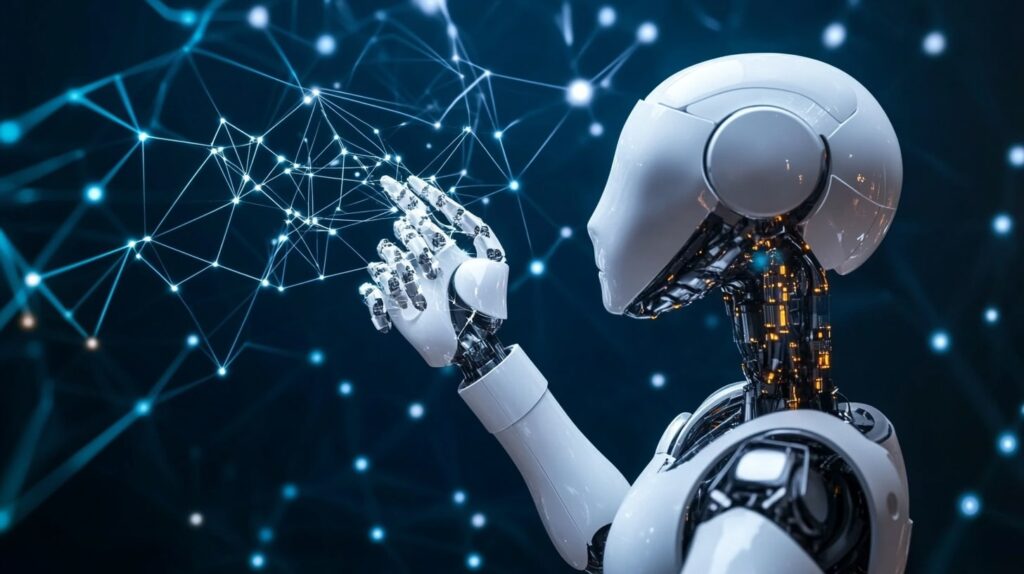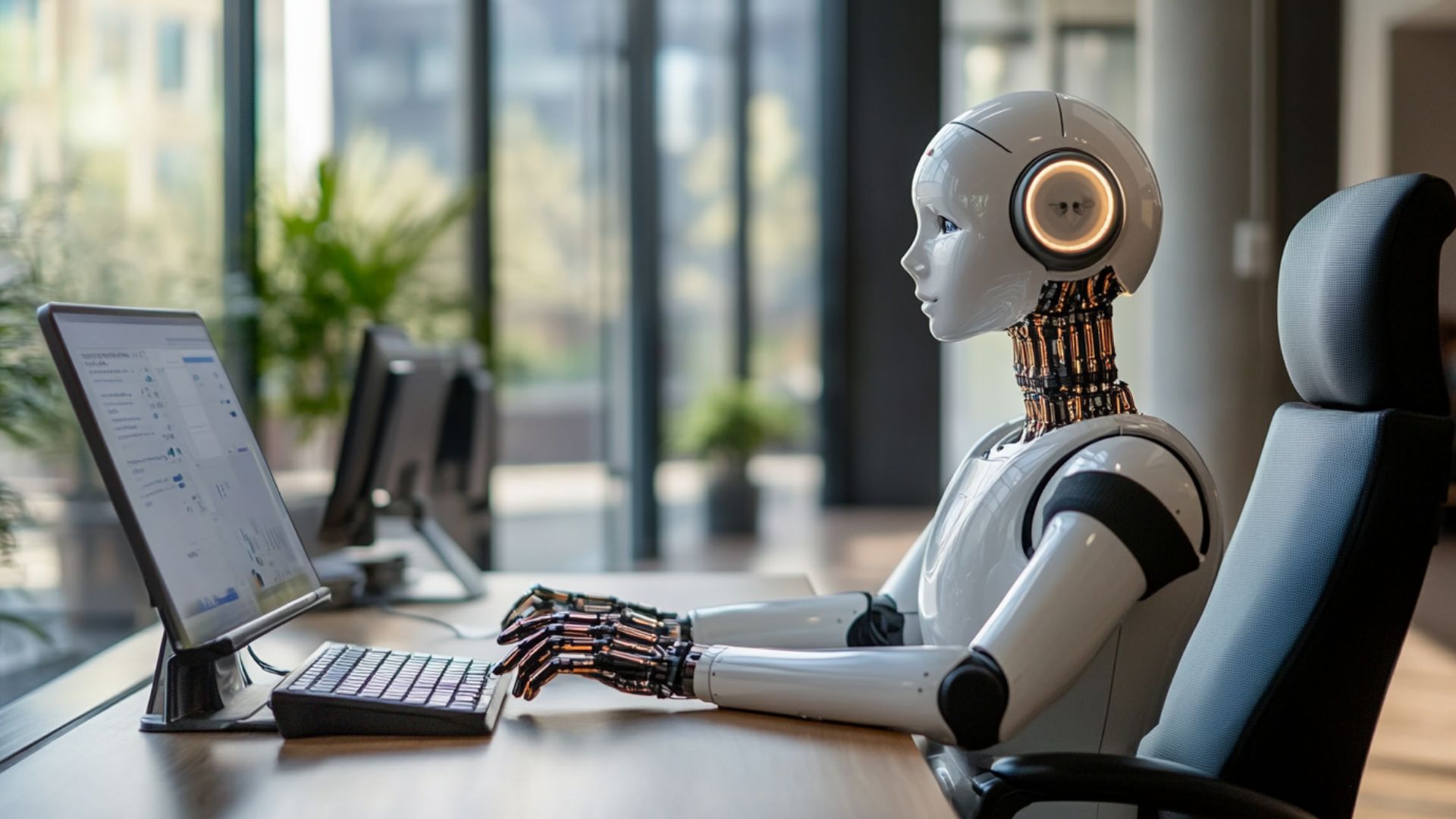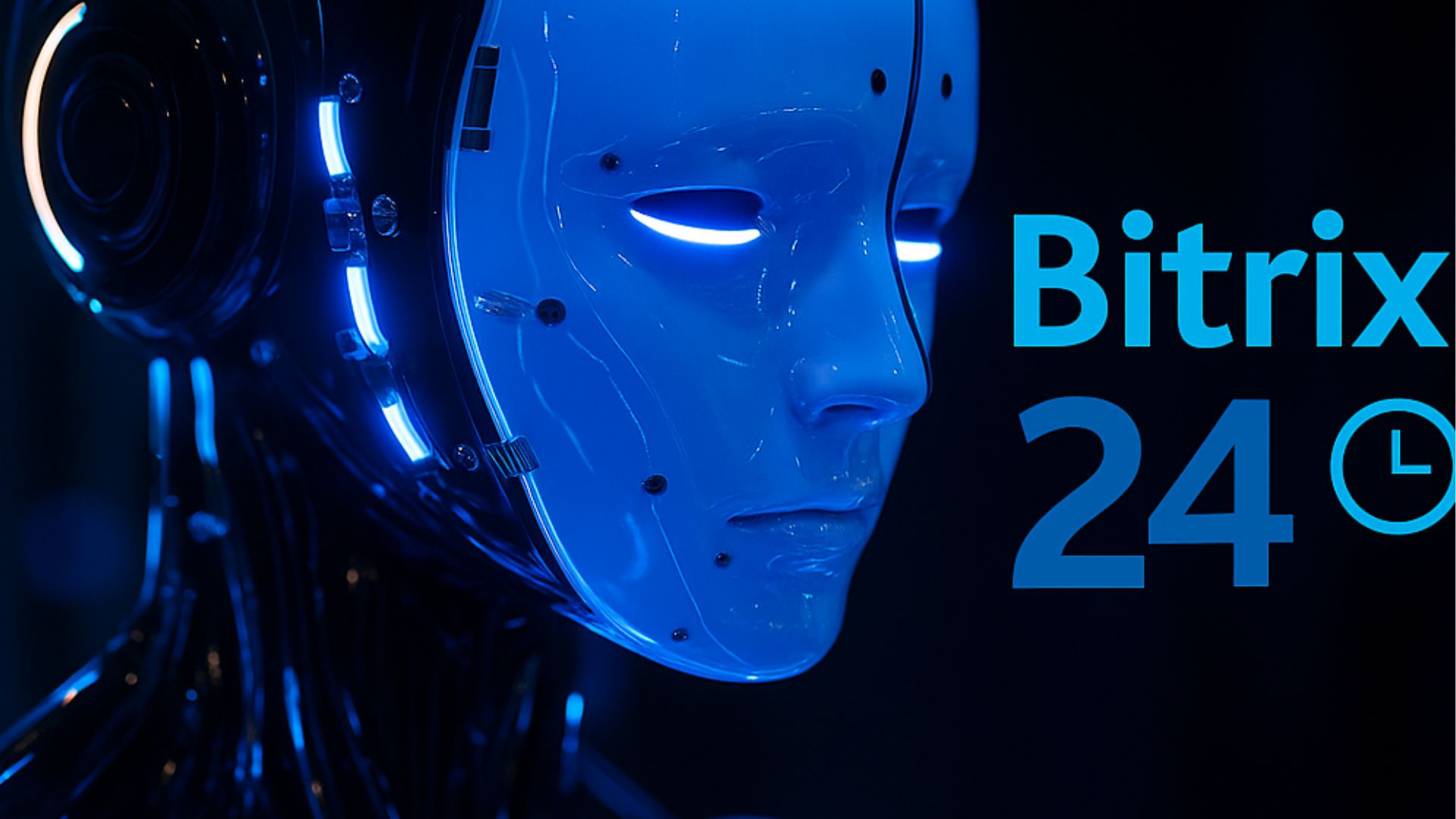Traditional AI vs Generative AI: Understanding the Key Differences

As interest in improving various fields grows, AI is increasingly being implemented. It is the basis for automating routine tasks and improving work. AI has a significant impact on communication and customer service. AI systems are trained using large datasets. Artificial intelligence can process tasks and optimize part of the work. Today, generative AI is often used as a new tool. Generative AI improves workflows and creates new content in ways conventional AI cannot. There are significant differences between traditional AI and generative AI in their key characteristics.
Understanding both types of AI is essential for implementation in any field. It's important to understand their differences and limitations when implementing AI solutions. Business strategies are focused on using AI for optimization. Generative artificial intelligence opens up new opportunities for the creative potential of the company. Both types of AI are essential for effective implementation. Traditional artificial intelligence operates based on predefined rules and parameters. It has mechanisms for detecting routine tasks and fraud. Unlike conventional AI, generative AI has more creative potential for a company. It learns from large data sets to create content and text.
What Is Traditional AI?
Traditional AI creates numerous opportunities for many companies. Traditional AI processes datasets and executes predetermined rules. Companies use it for specific tasks according to established guidelines. Companies define the logic and parameters that determine how the AI functions. Artificial intelligence enables data processing and data-driven decision making. Artificial intelligence processes the functions specified by the company.
Traditional AI follows predefined models and parameters. It usually gives effective but predictable results. Traditional AI offers accuracy, consistency, and scalability. It's ideal for companies that need clarity and predictable results. Here are the main applications of traditional AI:
- Automation in industrial sectors. AI is valuable for performing quality checks. Companies can control equipment and configure the optimization of work.
- Data analysis. In many areas, artificial intelligence is a priority. Through data analysis, millions of data points and information can be processed. This information is necessary to determine forecasts and the latest trends in various fields.
- Decision-making process. Rule-based AI can process millions of tasks and also assist in decision-making. It excels at fraud detection in the decision-making process. AI is also involved in the distribution of customers by priority direction.
Despite the inherent advantages of artificial intelligence, it has its drawbacks. It is essential to understand the difference between AI and generative AI. Traditional AI is designed for specific, predefined tasks. It lacks the creative flexibility that companies sometimes need. Traditional AI learns from historical data and pre-programmed instructions. It requires ongoing human monitoring and supervision. However, it remains essential for automating work in many areas.
Key Characteristics of Traditional AI
Traditional artificial intelligence has its own rules and functions when performing tasks. It works with structured data and company-specific parameters. Companies implement algorithms that control AI according to specific rules. Companies use AI for control, productivity, and prediction of market trends. What are the main differences between traditional AI and generative AI, and what advantages does each offer? Let's consider conventional artificial intelligence and its characteristics:
- Rules-based decision-making. Companies employ professionals who establish the rules and parameters. These rules are aimed at improving business and optimizing work. AI follows these rules consistently in its applications. Its main task is to serve customers and perform routine tasks. Diagnostics and automation also belong to artificial intelligence.
- Dependence on large data sets. Companies use machine learning to process data with predetermined algorithms. Artificial intelligence requires large and structured data provided by the company. This data must be clean and specifically prepared for the intended purpose. Precise calibration helps companies optimize their business and operating systems.
- Structured algorithms. Artificial intelligence uses algorithms to do its job. Algorithms such as classification and clustering are explicitly built for the company. They help solve many fraud-related problems. The difference between AI vs generative AI is that conventional AI is geared towards optimizing inventory. It is driven by sorting letters and precise data from the company.
There are several important applications of conventional AI for companies. They are reliable and clear to optimize the business. Examples of traditional AI include chatbots, recommendation systems, and expert systems. Chatbots provide constructive responses to customers based on recognizing certain words. Recommendation systems track user histories and apply predefined rules. Expert systems are a reliable way to achieve success in medical diagnostics. They assess risks and adjust work accordingly for the company.
Limitations of Traditional AI
Traditional artificial intelligence plays a significant role in any business. It delivers results based on the company's goals while following established rules and generating positive customer feedback. Its application is spread over clear data sets to obtain efficiency. However, there are specific problems with its application. The difference between traditional vs generative AI is evident if you delve into the issue in more detail. Here are the main limitations of traditional artificial intelligence:
- Lack of creativity and novelty. Artificial intelligence works on the basis of specific data from the business and the company. It relies on this data and can process large sets of information. However, originality is absent in the use of conventional artificial intelligence. Unlike generative, traditional artificial intelligence can’t create new ideas. It processes given functions and brings results precisely in this.
- Problems with unstructured data. Traditional artificial intelligence works great with unstructured data. It processes and interprets information and spreadsheets. It clearly shows its advantages for optimizing work. However, it cannot create creative approaches in the form of images or text. The difference between gen AI vs AI is that traditional artificial intelligence does not work without human intervention.
- Maintenance and scalability issues. Companies using conventional AI must constantly take care of updates. The latest trends and the search for stable information require this update. Companies use manual labor to retrain employees. Usually, this approach requires additional funds and investments in improving AI.
What Is Generative AI?

Generative AI is gaining new reviews and popularity. Its use in business and other fields is getting quality results. It has gained popularity for its intuitive ability to create music, text, and other content. Training with existing data helps generative AI achieve results. It can imitate the patterns and learned data on which conventional AI works. It is essential to understand "what makes generative AI unique? And why is it useful?
Generative AI includes neural networks and deep learning. These methods help achieve results and have advanced technologies. These technologies enable AI systems to recognize complex patterns. Companies provide large datasets that generative AI can leverage for numerous capabilities. It creates realistic content necessary for a company to be competitive. Here are the key applications of generative AI:
- Text generation. One of the most significant advantages is the generation of text in any format. Based on the learned data, generative AI creates conversations and text. It can generate code and create documents according to requests.
- Image creation and design. The difference between AI and generative AI is in the creation of images and designs. Generative AI can create various sketches and pictures based on data. It interprets images into digital formulas that are necessary for the company.
- Music and audio creation. One of the most significant advantages of generative AI is music and audio creation. It is excellent at creating music based on data and generating a voice. Using data, audio, and music is made according to different genres.
- Product and content innovation. Generative AI has found an approach in offering new solutions. These solutions include drug discovery innovation, various designs, and marketing. One of its most significant advantages is data-driven creativity and a creative approach.
Key Features of Generative AI
For effective results and work optimization, it is important to know "what is generative AI vs AI?". Generative AI has a unique ability to create original content. It is based on data produced by companies but with a creative approach. Generative artificial intelligence learns patterns and structures based on data. It is a prime example of creating reliable results.
Generative AI can generate content based on given rules and data. Its most significant advantages are creativity and personalization. It creates personalized content according to the data needed by the company. In addition to processing ordinary data, generative AI processes text, images, and sound. Understanding the differences between generative AI and traditional AI can give companies a competitive edge. Generative AI relies on advanced deep learning models:
- GPT. The generative pre-trained transformer (GPT) provides reliable results for companies. It is used for natural language processing and text generation. These transformer models generate text that meets company requirements. It usually imitates human communication and conversation.
- GAN. Generative adversarial networks (GANs) help companies create realistic images. GANs use specialized algorithms trained to create audio and video content. This process utilizes neural networks to deliver consistent, high-quality results. Companies have reported positive outcomes when implementing generative AI.
Advantages and Applications of Generative AI
Today, the question of generative AI vs traditional AI remains relevant for many companies. Generative AI has many advantages that are aimed at improving business. They extend beyond traditional optimization and task automation. The latest innovations are aimed at personalized experiences and adapting to opportunities. The most important advantages of generative AI are creativity, innovation, and adaptability.
In the workflow, a creative approach is highly valued due to its quality. Generative AI can create engaging and rich text according to the company's rules. It generates and produces audio and music that is interesting in content. Gen AI vs AI has its advantages in rule-based adaptability. Generative AI models learn from the experience of past actions. However, they can evolve and create dynamic environments. Companies can scale creative efforts to the extent of their capabilities. Here are the main applications of generative AI in different sectors:
- Art and design. Specialized generative AI tools can create digital art. They produce visual content that aligns with company guidelines. This process enables rapid prototyping and creative exploration.
- Content creation. The use of GPT remains relevant for writing various advertising articles and texts. Companies accelerate marketing and stay competitive in the market.
- Drug discovery. There are specific patterns when studying types of AI generative vs traditional AI. Generative models have a significant impact on drug development. They are aimed at modeling biological reactions and various molecules for doctors.
- Personalized recommendations. Generative artificial intelligence has its advantages in customized recommendations. It creates the necessary data to improve the development of a sustainable company. Generative AI creates customized products and services according to the desires of users.
Comparing Traditional AI and Generative AI: A Side-by-Side Analysis

The question of using traditional AI vs generative AI remains open. Each type has its successes in specific applications. Their advantages are appreciated by business owners for optimizing tasks. The optimal choice between them depends on the company's specific goals. Understanding these differences is crucial for selecting the appropriate AI tools.
Data requirements:
- For traditional artificial intelligence, structured data is essential. Companies learn and label special data for accurate functioning.
- Generative AI typically requires larger and more diverse datasets. Often, video, text, and images are necessary.
Adaptability:
- Generative AI vs AI differs in that generative AI is easier to adapt to contexts. It can generate more creative answers based on the input data.
- Traditional AI is less flexible and requires more frequent updates. Companies face problems and significant difficulties in various scenarios.
Opportunities:
- Traditional AI is driven by rules and established data. It is integral to improving the automation and forecasting process. It can detect fraud and suspicious activities.
- Generative AI creates new, high-quality content. It is involved in making various images, codes, and texts based on learned patterns.
Application:
- The difference between traditional and generative AI becomes clear in business applications. Traditional AI powers chatbots with predefined answers. It works with risk assessment tools and data collection.
- Generative AI uses data-driven code generation and image creation. Its use is usually attributed to ChatGPT to create quality emails and texts.
The Impact of Generative AI on Industries
Generative AI is spreading in many areas. It helps to optimize work within the company. Generative AI promotes new innovations and has a significant impact in various sectors. It excels at enhancing both efficiency and creativity. This new approach is transforming customer personalization. Here are the industries that cannot do without generative AI:
- Marketing and advertising. It is important to understand "how is generative AI different from traditional AI?". Generative AI uses special tools to improve business. It creates various blogs, texts, and conceptual content. Electronic companies use generative AI tools. These tools have become essential for marketing professionals. Marketers can generate personalized content according to each client. This reduces production time and minimizes errors. Automation helps maintain balance and improve the development of the company.
- Entertainment. Generative AI generates different dialogues and characters according to needs. Tools are essential for various video and audio content. One striking example is Netflix, which personalizes interesting fragments for viewers. It selects recommendations according to the desires and preferences of a person. Companies can achieve desired results with minimal resource investment.
- Healthcare. When examining generative AI applications in healthcare, understanding the fundamental concepts is essential. Generative AI supports drug development and helps establish some rules. It develops new molecules and specific modeling. Some companies use generative AI to improve drug development. Companies reduce costs and waiting times thanks to generative AI tools. Generative AI takes part in communicating with patients. It helps create clinical reports and establish communication.
- Finance. In the field of finance, generative AI is best for automation. It effectively handles customer service scenarios. Generative AI helps create reports and simulate different scenarios with customers. Companies benefit from its use through customized advice and risk assessments.
Future Trends in AI: Bridging Traditional AI and Generative AI
There is quite a lot of debate about the issue of traditional vs generative AI. Each type of AI offers powerful capabilities for specific applications. They provide optimal benefits when properly implemented in suitable domains. Artificial intelligence continues to evolve, combining the best aspects of both approaches. Hybrid models will help to gain efficiency during the company's workflow and can solve a broader range of problems.
- Traditional artificial intelligence is best for learning and working according to rules. It analyzes data and detects various frauds that are important for the company. Traditional artificial intelligence effectively solves process automation. Generative artificial intelligence relies on the same dataset but with a creative approach. It integrates the capabilities of different areas and is guided by human intuition.
- AI vs generative AI always raises many questions. Combining these approaches creates powerful synergies that improve productivity. In different areas, these two tools will help to achieve success. Combining these approaches enables more human-like responses to common questions. In healthcare, the combination will help improve diagnostics and reporting. The financial sector will benefit from reduced risks and more comprehensible economic reports. Hybrid models are the best solution for enhancing the strategic objectives of companies.


